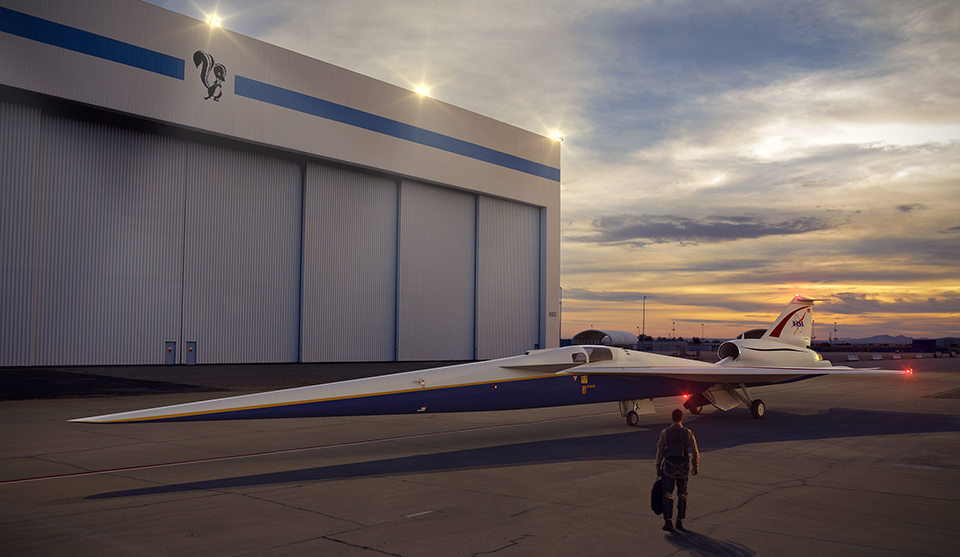NASA Fights for Future of Commercial Supersonic Flights Over Land
By Matt Kamlet, NASA Armstrong Flight Research Center and Sasha Ellis, NASA Langley Research Center
July 23, 2018 - Just over 70 years ago, Capt. Chuck Yeager became the first person to fly faster than the speed of sound, with the help of NASA’s predecessor, the National Advisory Committee for Aeronautics (NACA). Expanded supersonic flight, in which all air travelers can get to their destinations in half the time both internationally and domestically, remains a dream, but NASA brings it closer to reality.
Just as Yeager’s Bell X-1 achieved the first supersonic level flight, NASA’s newest supersonic X-plane, the X-59 QueSST, seeks to advance that legacy into a new era of aviation, through the goal of reducing the sonic boom into a quieter sonic “thump.”
The loud sonic boom, typically heard on the ground below when an aircraft traveling faster than the speed of sound passes above, is the primary factor in the restriction of supersonic flight over land. The sonic boom travels along with the aircraft as long as it flies supersonic, which means much of the ground beneath the flightpath is exposed to it, including communities. NASA’s efforts in supersonic flight research have culminated into the potential to reduce this boom to a softer “thump,” which would be barely audible, and potentially go unnoticed. This may open the door to the future of commercial supersonic flight over land.
NASA’s X-59, currently under construction by Lockheed Martin Aeronautics Company in Palmdale, California, will take to the skies in 2022 to demonstrate this quieter supersonic flight for select communities around the country.
Nils Larson, chief pilot at NASA’s Armstrong Flight Research Center in California and lead pilot for the X-59, will be at EAA AirVenture to discuss the project and its goals. His forum “Zoom Without the Boom” is scheduled for 8:30 a.m. on Tuesday at Forum Pavilion 4. Further information about the X-59 is available at the NASA tent, located at Aviation Gateway Park.

